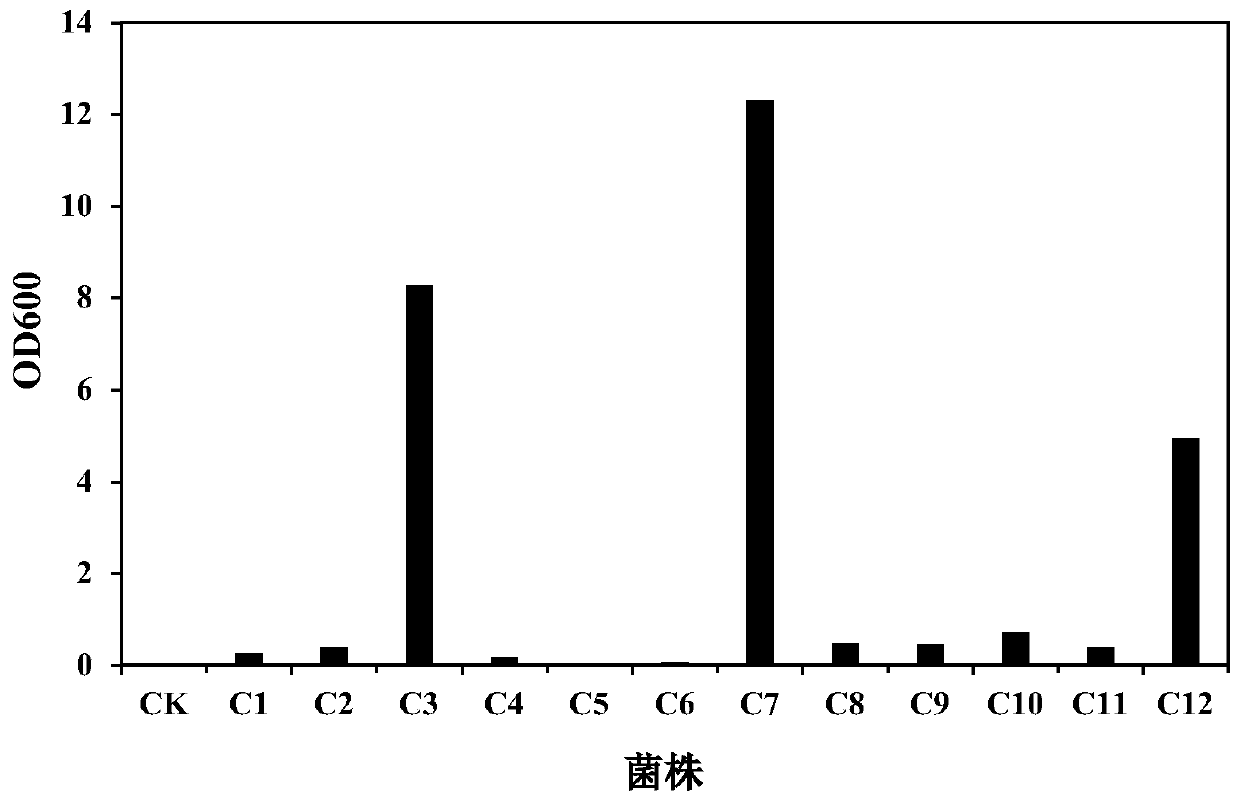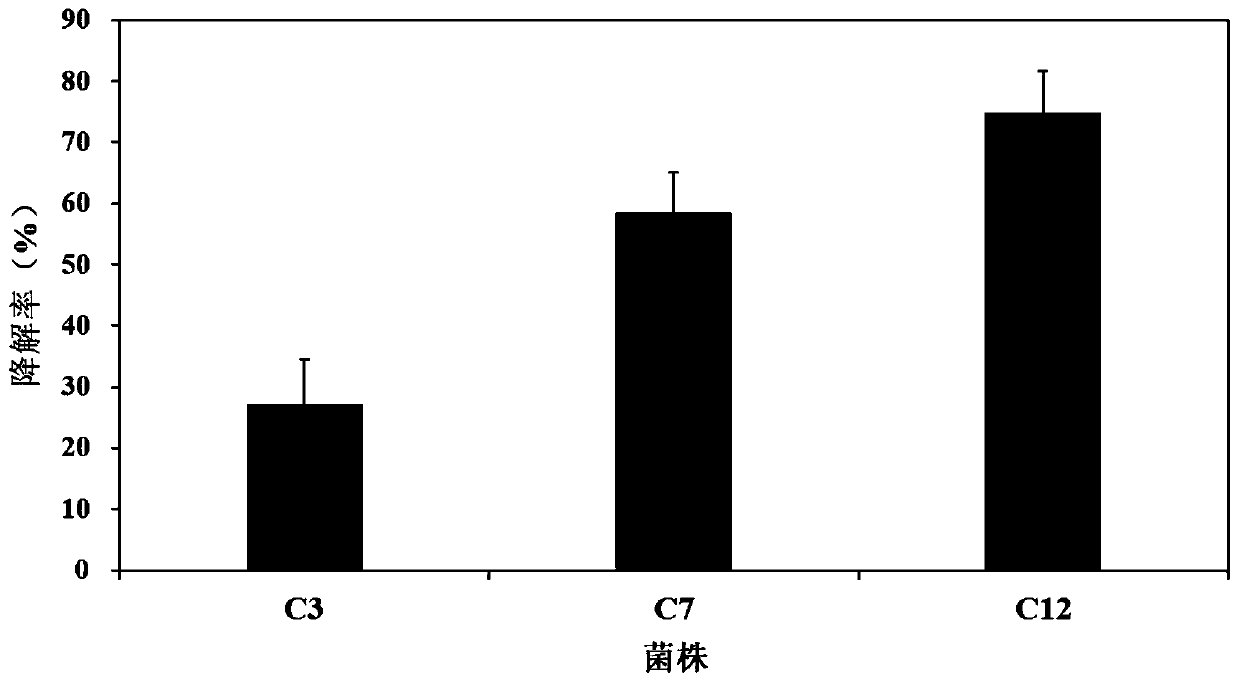Microbial strain for degrading long-chain alkanes and application of microbial strain
A technology of long-chain alkanes and microbial bacteria, which is applied in the direction of microorganisms, microorganisms, and isolated microorganisms. It can solve the problems of application limitations, inconsistent application conditions of different strains, and poor stability of bacterial flora, so as to achieve convenient application and benefit governance and bioremediation. , the effect of promoting degradation
- Summary
- Abstract
- Description
- Claims
- Application Information
AI Technical Summary
Problems solved by technology
Method used
Image
Examples
Embodiment 1
[0054] Acquisition, screening and identification of strain Acinetobacter juniiC12.
[0055] Step 1. Sample collection and enrichment culture
[0056] Retrieve soil samples contaminated by crude oil from Dongying Shengli Oilfield Oil Production Plant, weigh 10g of the collected soil samples and add them to 100mL inorganic salt medium, shake well, add 0.1% crude oil to it, and place it at a constant temperature of 30°C and 150rpm Cultivate in a shaking incubator for 7 days;
[0057] Take 1 mL of the culture solution and add it to the inorganic salt medium containing 0.1% n-hexadecane, and repeat the above operation to obtain the enriched culture solution.
[0058] Step two, separation and purification
[0059] Take 1mL of the culture solution and dilute it to 10% by volume with sterile water -1 ,10 -2 ,10 -3 ,10 -4 ,10 -5 ,10 -6 ,10 -7 ,10 -8 Take 100 μL diluted bacterial suspension with concentration gradient and evenly spread it on a solid LB plate, and place it upsi...
Embodiment 2
[0067] Effect of temperature on degradation of n-hexadecane by strain Acinetobacter juniiC12.
[0068] The strain Acinetobacter juniiC12 was inoculated into inorganic salt medium containing 0.1% volume ratio, and cultured in a constant temperature shaker with a rotation speed of 150 rpm and a culture temperature of 15°C, 20°C, 30°C, 35°C, and 40°C for 48 hours. Gas chromatography is used to detect the impact of temperature on the degradation of n-hexadecane by bacterial strains, the results are shown in Figure 4 , it can be seen from the results that the suitable temperature range of the strain is 25 ℃ ~ 40 ℃, which has a wide range of temperature utilization.
[0069] This example shows that the strain Acinetobacter junii C12 has a good degradation effect on n-hexadecane in different temperature environments.
Embodiment 3
[0071] Effect of pH on the degradation of n-hexadecane by strain Acinetobacter junii C12.
[0072] C12 was inoculated into the inorganic salt medium containing n-hexadecane with a volume ratio of 0.1%, and the pH of the medium was adjusted to 3, 5, 7, 9, and 11 respectively, and the temperature was 30°C at a constant temperature shaker with a rotation speed of 150rpm Cultivated in medium for 48h, adopt gas chromatography to detect the influence of pH on bacterial strain Acinetobacter junii C12 degrading n-hexadecane, the results are shown in Figure 5 .
[0073] It shows that the strains have a good degradation rate of n-hexadecane at a pH value of 6-8, and the degradation effect is the best at a pH value of 7, which can be widely used in this range.
PUM
 Login to View More
Login to View More Abstract
Description
Claims
Application Information
 Login to View More
Login to View More - R&D
- Intellectual Property
- Life Sciences
- Materials
- Tech Scout
- Unparalleled Data Quality
- Higher Quality Content
- 60% Fewer Hallucinations
Browse by: Latest US Patents, China's latest patents, Technical Efficacy Thesaurus, Application Domain, Technology Topic, Popular Technical Reports.
© 2025 PatSnap. All rights reserved.Legal|Privacy policy|Modern Slavery Act Transparency Statement|Sitemap|About US| Contact US: help@patsnap.com



